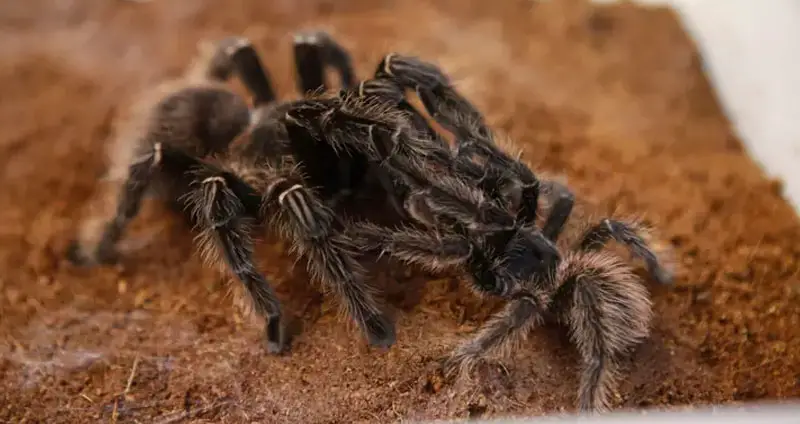Tarantulas have become extremely popular pets within the past decade, and they’re only becoming more popular as time goes on. This can be attributed to their great appearances, unique personalities, and their surprisingly long lives.
While most tarantulas only have around a 6″ legspan, you’ll be hard-pressed to find a tarantula species whose females don’t live past 10 years old!
So, how long can a pet tarantula actually live? What determines how long a tarantula will live for, and is there anything that you can do to make your tarantula live longer? The answers may be surprising.
Table of Contents
How Long Do Tarantulas Live?
Tarantulas have lifespans that vary greatly between species. Males of some species often only live for about 3 years, while females of other species have been observed living for almost 40 years.
There are several aspects that contribute towards a tarantula’s lifespan, and those factors will be discussed further into this post. However, it’s because of these factors that the lifespan of a tarantula can’t easily be stated.
So, if you have a tarantula and you’re wondering how long it will live, read on to get an idea for how long your specific spider can be expected to live.
Examples Of Different Tarantula Lifespans
There are over 800 different species of tarantulas that have been discovered and documented today. As you can imagine, a lot of diversity is present in that large collection of tarantulas.
Tarantulas of all shapes, sizes, colors, and temperaments exist all throughout the world, and each species has a different lifespan from the next.
Below, we’ve compiled the lifespans of 10 different tarantula species to give you an idea for how long some of the most popular species live for.
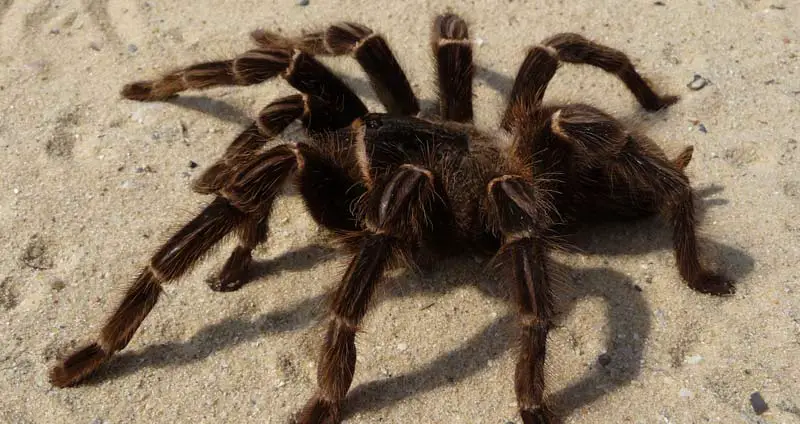 |
Lasiodora parahybana
Males: 3 – 5 years |
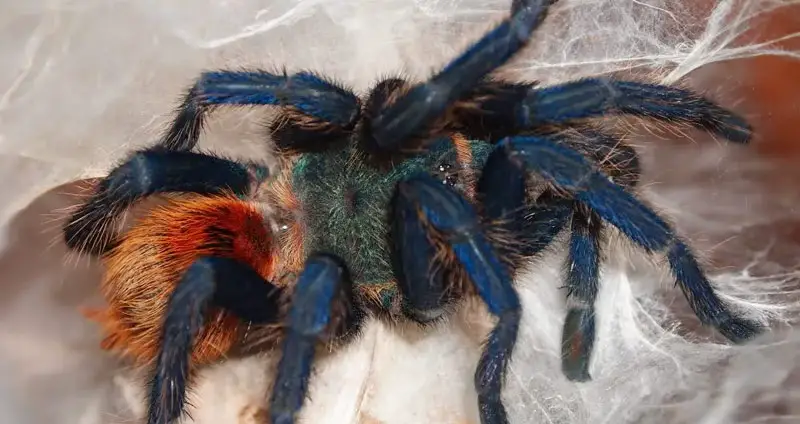 |
Chromatopelma cyaneopubescens
Males: ~3 years |
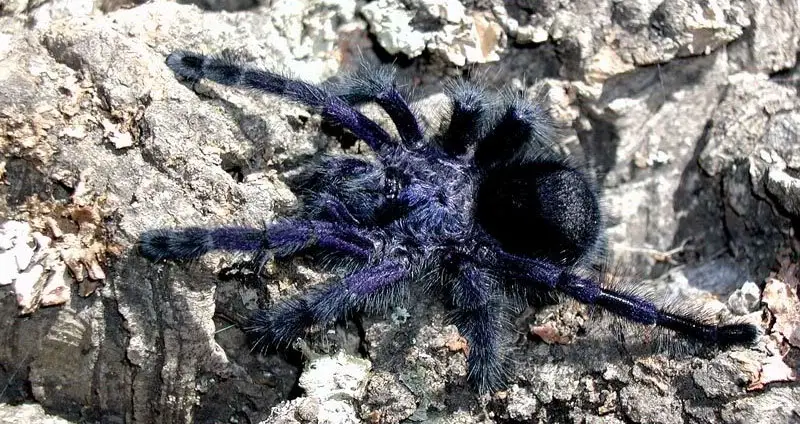 |
Avicularia purpurea
Males: 3 – 4 years |
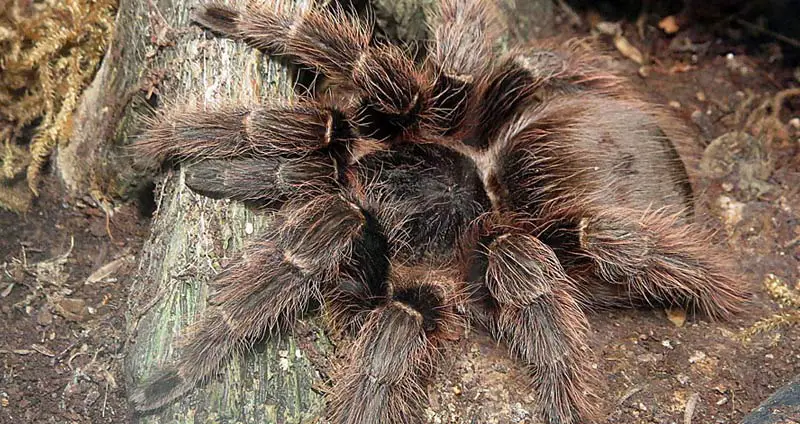 |
Eupalaestrus campestratus
Males: 4 – 6 years |
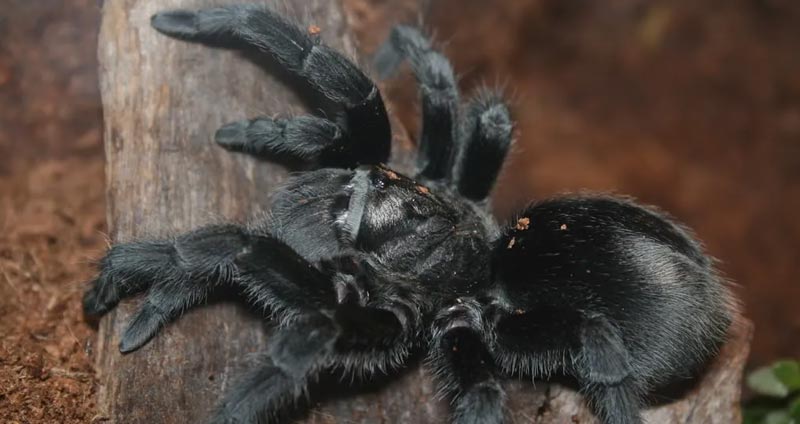 |
Grammostola pulchra
Males: 5 – 8 years |
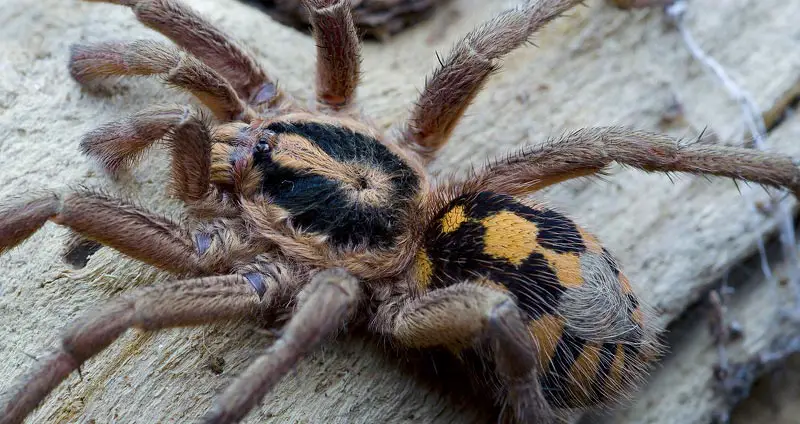 |
Hapalopus sp. Columbia
Males: 3 – 4 years |
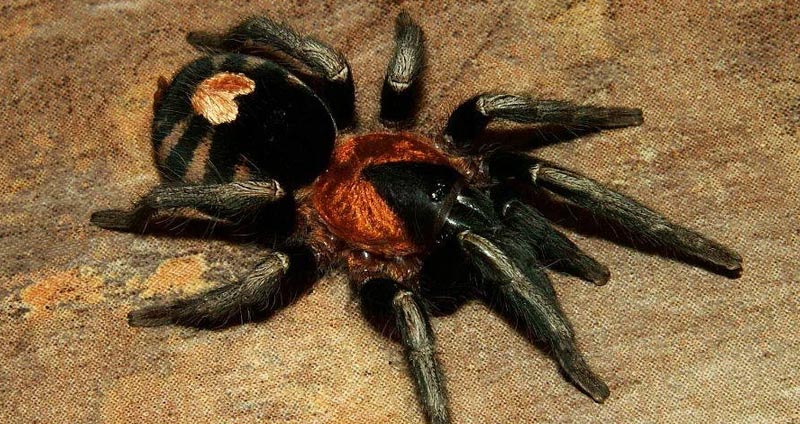 |
Cyriocosmus elegans
Males: ~3 years |
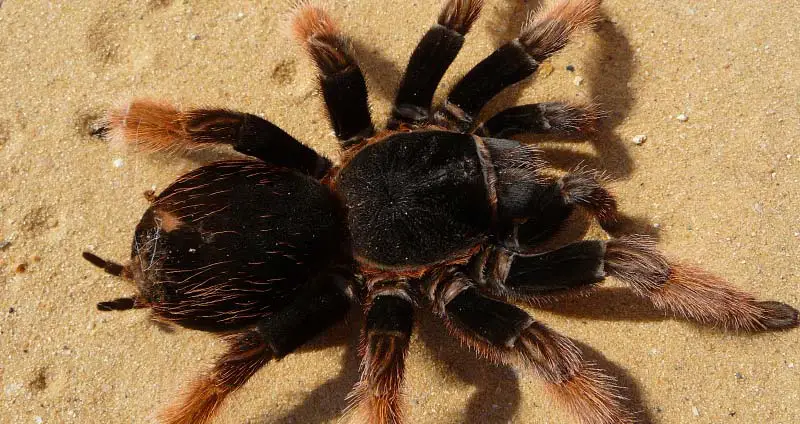 |
Brachypelma klaasi
Males: 3 – 5 years |
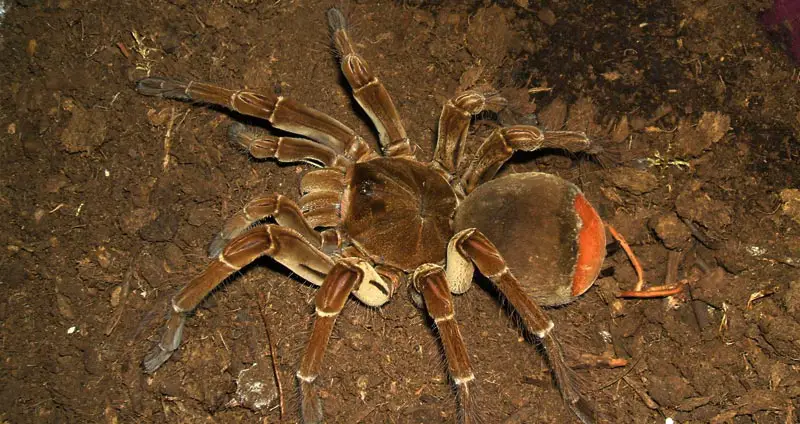 |
Theraphosa stirmi
Males: 3 – 4 years |
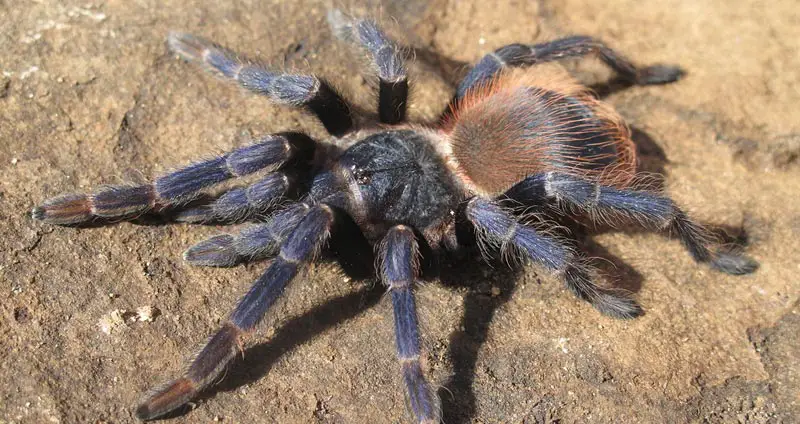 |
Pterinopelma sazimai
Males: ~3 years |
What Determines A Tarantula’s Lifespan?
As stated, there are many factors that play into how long a tarantula lives for. Aside from proper care, most of these factors simply come down to the biology of that particular tarantula species.
Tarantulas have existed for millions of years, meaning that they’ve evolved to be extremely efficient hunters, builders, and reproducers. Some species perform better with shorter lifespans, and others perform better when they live for decades.
The three main factors that determine a tarantula’s lifespan are the species of tarantula, the tarantula’s sex, and the care that that tarantula receives.
Species Of Tarantula
As made apparent above, the species of tarantula is a huge influence in how long a tarantula lives. Some species are well-known in the tarantula community for their longevity, while others barely reach a decade.
Surprisingly, there are very few trends present in this regard.
Specifically, it’s nearly impossible to look at a tarantula and guess its age without actually observing it living out its entire life. An example of this discrepancy is present in two very popular Brachypelma species: Brachypelma hamorii and Brachypelma albopilosum.
Both of these tarantulas are from the same genus of Brachypelma, both are about the same size, from the same general area, and have nearly identical temperaments. However, B. hamorii females can live for up to 40 years, while B. albopilosum females only live up to 15 years.
Therefore, before you purchase a tarantula, be sure to research each individual species so that you know how long you should expect your new pet to live.
I will say, though, that more docile, sedentary tarantulas tend to live longer than more aggressive tarantulas. This is explained below.
The Tarantula’s Sex
At this point, you may have noticed that female tarantulas outlive male tarantulas by several orders of magnitude.
The amount of male tarantulas that lives past 10 years of age is incredibly small, while healthy females should never live for less than 10 years.
So why is it that male tarantulas live shorter lives?
A study was carried out in 2010 that researched the massive lifespan discrepancy between male and female tarantulas of the species Brachypelma albopilosum and may explain some of the difference.
Essentially what this study found was that males were much more active and thus had a higher metabolic rate. This induced higher reactive oxygen species production without sufficient antioxidant protection, drastically shortening their lifespan.
Simply put, males are more active and experience more stress, thus shortening their lives. This can be seen playing out in “pet rock” tarantulas that don’t move around a lot or act aggressive/defensive.
These calm, docile tarantulas tend to live longer than their hyperactive counterparts.
This massive difference in lifespans between males and females results in males costing significantly less than females, essentially only having value to breeders.
Care That The Tarantula Receives
As with any pet, the care that you provide for it will have a large impact on how long it lives for.
Well cared-for tarantulas can easily live out all of their years, while neglected tarantulas frequently die very early. So, it’s in everybody’s best interest to properly care for their tarantula.
The most important “care” factors will be addressed below, but it essentially comes down to good tarantula husbandry — something that every owner should be very well-versed on!
Helping Your Tarantula Live As Long As Possible
No matter what pet you own, it only makes sense that you’ll want that pet to live for as long as possible. Yes, this even applies to tarantulas.
Once you’ve had the pleasure of keeping a tarantula for some time, you’ll understand why people are so crazy about them and want to keep them around forever.
So, how can you be sure that your pet tarantula will live for as long as possible?
Buying A Long-Living Species
First and foremost, the best way to ensure that your tarantula will live for a long time is by purchasing a species that’s known for its long lifespan!
If you purchase a species that’s known to regularly live up to 30 years, you can expect your spider to live about that long with proper care — it’s that simple.
If you’re a first-time tarantula owner, do some research to find a great beginner tarantula that’s also known for its long lifespan. Many Brachypelma and Grammostola tarantulas fall under this category.
Remember that this doesn’t really matter if you get a male tarantula, so try and purchase a mature female instead of an unsexed spiderling. It will be more expensive, but it’s definitely worth the price.
Feeding The Tarantula Well
While many tarantulas will grow to be very large and live for several decades, they won’t get there if they’re not given a proper diet. A tarantulas diet is extremely important.
What do tarantulas eat, though? Well, wild tarantulas eat nearly anything and everything. Pet tarantulas, on the other hand, are commonly fed simple diets of crickets, roaches, mealworms, and the occasional baby mouse/gecko.
Take the time to learn your individual tarantula’s feeding habits and adjust your feeding schedule to match. When a tarantula is fed enough, the benefits are very clear in the form of fast growth and plenty of energy.
In addition to a nutritious diet, tarantulas need water in order to live. Provide them with a clean, full water dish at all times, in addition to keeping their enclosure humid.
Providing An Optimal Enclosure
It’s quite shocking to see the amount of tarantula owners that are keeping their tarantulas in enclosures that are much too small and ill-equipped. They may not realize it, but this is harming their tarantulas greatly.
Bad tarantulas enclosures seriously limit the mobility and natural behaviors of tarantulas, resulting in stress and behavior that’s all-around harmful.
Therefore, you’ll want to put effort into getting this aspect of tarantula ownership right. Fortunately, it’s not difficult to provide the perfect enclosure.
First of all, figure out whether your tarantula is a terrestrial or arboreal species. Terrestrial tarantulas need plenty of floor space with lots of substrate to burrow into, while arboreal species need lots of vertical climbing space.
You’ll then need to decorate the enclosure with moisture-retaining substrate, a tarantula hide to reduce stress, a water dish, and some rocks and fake plants to round things out.
Once the enclosure is built, you’ll need to keep the inside of it at an optimal climate for your particular species. Each tarantula has a specific temperature and humidity range that it needs to be kept at for optimal health.
Most tarantulas thrive around room temperature, so not many will require supplemental heating. Be sure that temperature is well-maintained, though, as high or low temperatures drastically shorten a tarantula’s lifespan.
In terms of humidity, tarantulas vary in their requirements. Once you know the specific range, maintain it by misting one side of the enclosure several times per week.
A digital thermometer/hygrometer can be used to monitor conditions within the enclosure so that you can make changes as needed.

